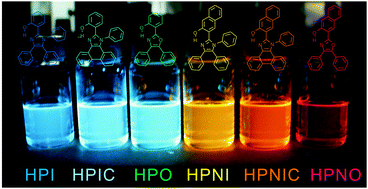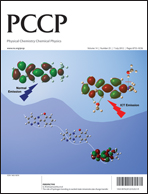Highly fluorescent molecules harnessing the excited state intramolecular proton transfer (ESIPT) process are promising for a new generation of displays and light sources because they can offer very unique and novel optoelectronic properties which are different from those of conventional fluorescent dyes. To realize innovative ESIPT devices comprising full emission colors over the whole visible region, a molecular design strategy for predictable emission color tuning should be established. Here, we have developed a general strategy for a wide-range spectral tuning of imidazole-based ESIPT materials based on three different strategies – introduction of a nodal plane model, extension of effective conjugation length, and modification of heterocyclic rings. A series of nine ESIPT molecules were designed, synthesized and comprehensively investigated for their characteristic emission properties. All these molecules commonly showed no clear and transparent visible range absorption with no absorption color, but showed different colors of intense photoluminescence over broad visible regions from 450 nm (HPI) to 630 nm (HPNO) depending on their molecular structure. With the aid of density functional theory and time-dependent DFT calculations using M06, wB97XD, and B3LYP parameters with the 6-31G(d,p) basis set, these tuned emission bands of nine emitters were assigned from the stabilized excited state conformations that were derived from modified molecular structures.

You have access to this article
 Please wait while we load your content...
Something went wrong. Try again?
Please wait while we load your content...
Something went wrong. Try again?


 Please wait while we load your content...
Please wait while we load your content...